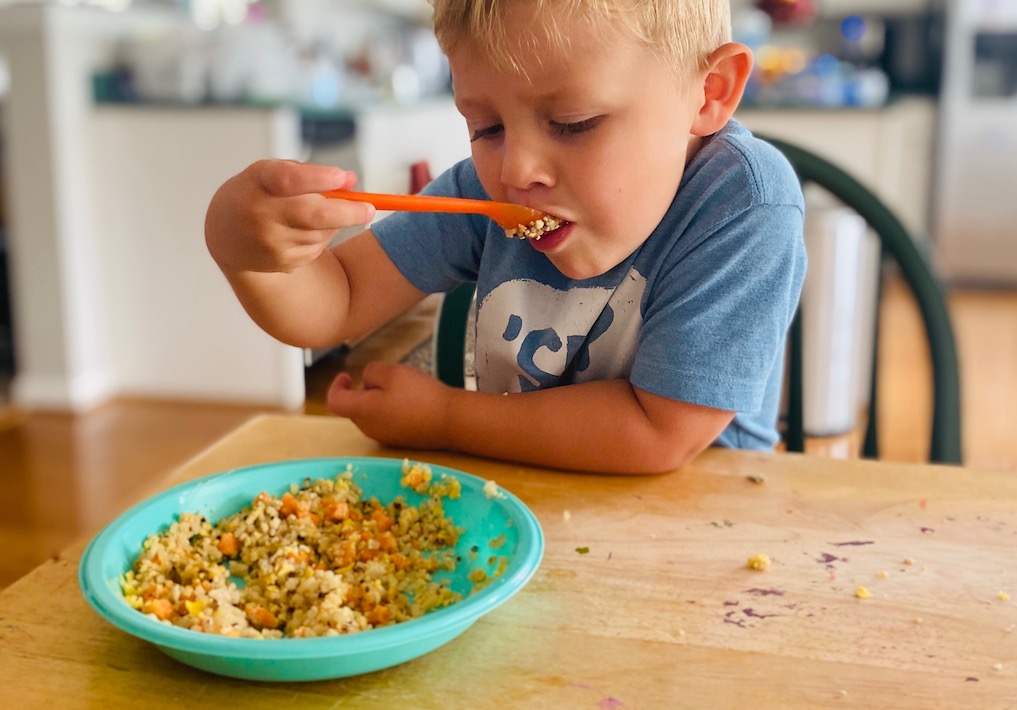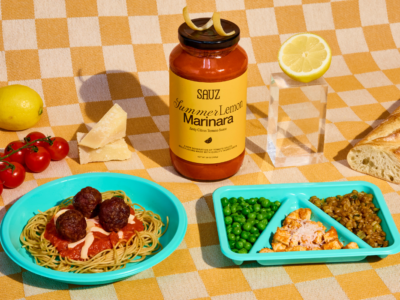If you’re like me, you were probably excited once your little one was ready for “real” food. What could be more fun than introducing them to all your favorites? But I was not ready for the cold, hard truth of toddlerhood: picky eating. Whether your mini is refusing to eat anything green or only likes their pancakes cut into triangles, fighting over mealtime can be exhausting. Here are my tried-and-true tips for expanding those picky eater’s palates.
Stress less.
First and foremost, remove stress from the kitchen table. Offer a variety of food to your toddler but with little pressure. The more you push, the more they will reject it—the moment there is tension, your loving toddlers will pick up on it and rebel. If they eat the food, they eat it, if they don’t, they don’t. We often play music (jazz or toddler radio) or read their favorite books during meal times to keep the mood light and to keep them in their chairs.
Keep trying new foods.
Along with a few safe foods (ones they’ve eaten and enjoyed) on their plate, include a small amount of a new type of food. It’s pretty overwhelming for kids to see a huge mound of something new, so keep portions small. The new food can be in any form such as roasted, raw, paired with a dip, a chip or even be a common food but in a different shape, like pasta. Even something little like trying a new shape encourages diversity and exploration.
Be patient.
It really can take 15-20 tries for kids to decide they want to try it so it’s all about the long game! Don’t give up if your little on refuses a new ingredient on the first try.
Get them involved in the process.
These ideas will help encourage participation, independence, and interest!
- Bring your kids to the farmer’s market or grocery store. My kids like to grab a kid’s cart and do their own shopping. We start with the produce section and I encourage them to pick something to eat while we shop.
- Get them involved in the kitchen! Give your kids their own gear—from whisks to cutting boards, there are a ton of options. It makes them feel part of the process, which will encourage more engagement and interest around food. Helping with smoothies, baking, mixing, blending, cracking eggs, adding seeds, washing veggies, etc. My kids will even take bites of new foods while they help me cook that they would never try if it were simply on their dinner plate.
Be a role model
Children learn to eat by watching others. Make sure you are eating the foods you want your little one to try. Although it can be challenging with demanding schedules, making time for family meals will have huge benefits. In our home we aim to have family meals on the weekends and we *try* to eat breakfast together during the week.
Keep cut up fruits and veggies in sight.
Keep crudité, fruit kabobs or cut up fruit out on the kitchen table with fun dips. When you are reaching for these snacks, your littles are likely to want some too. Plus, you’ll be surprised what your children are willing to try when they’re hungry. And again, repetition is key.
Talk about food away from the table.
I am a huge supporter of integrating food into your life outside the kitchen. Try reading books on food or getting veggie temporary tattoos (I love Tater Tats). My son loves Veggie’s Bud’s Club which is a monthly subscription for children ages 3-6 that features a new healthy veggie each month (think recipes, seeds, arts and crafts projects, books, etc.). Non-mealtimes are less high stakes and encourage increased curiosity.



